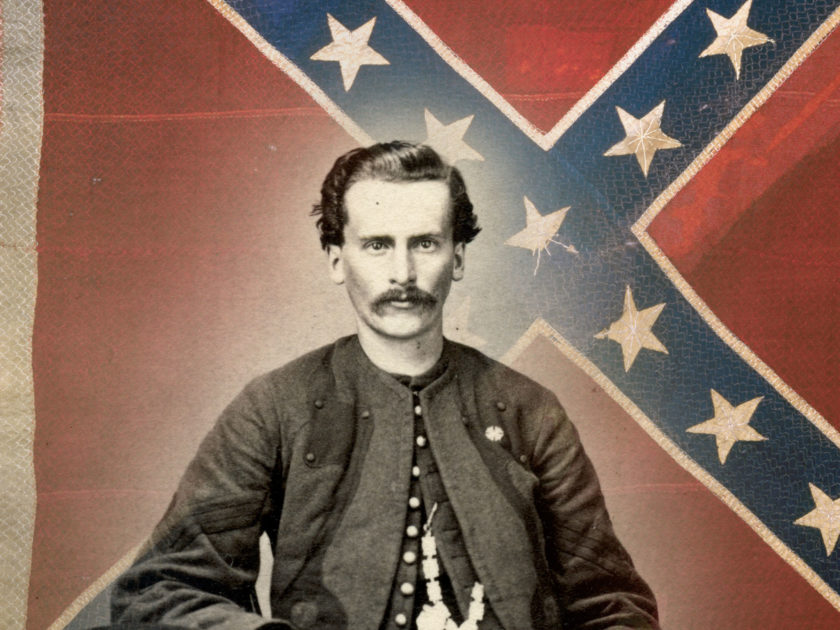
There came a moment during the fight at Five Forks when federal Sgt. Robert Shipley ran across a rebel color bearer from the 9th Virginia Infantry. The Confederate, with banner in hand and his back turned to the oncoming Shipley, had no idea what was coming at him. He soon found out.
“A gentle poke with the butt of the rifle reminded the Virginian that a Union soldier wanted his flag. ‘Pass those colors over to me,’ Shipley shouted. The Confederate whirled around and with the flagstaff for a club was about to let it down on the head of the sergeant, but the latter, considering this the wrong answer to his command, made good use of his bayonet, which rendered further parley superfluous, and thus secured the flag,” according to a postwar story.
Shipley’s act resulted in the Medal of Honor, one of 17 awarded for the Battle of Five Forks on April 1, 1865. He became the only soldier in his regiment, the 140th New York Infantry, to receive the citation. Shipley’s recognition is more impressive in light of the regiment’s battle history, which includes the defense of Little Round Top during the Battle of Gettysburg and other major engagements with the Army of the Potomac. Also of note: Shipley had been with the 140th for only five months prior to Five Forks. He had spent the bulk of his service in another Empire State regiment, the 44th, which had a similarly impressive fighting record. Shipley transferred to the 140th after his term of enlistment expired in October 1864.

Years later, in 1888, a newspaper reporter interviewed Shipley and learned that he had cut one of the stars from the captured flag as a memento and still had it in his possession. The reporter could not resist asking Shipley for his opinion on President Grover Cleveland’s support for the return of captured Confederate banners. Shipley, the reporter noted, “Would forward it to the president and have it replaced on the captured flag if he was still of the opinion that the rebel flags ought to be returned to the their original owners.”
Shipley died at age 64 in 1903. That same year, his story was published in Deeds of Valor: How America’s Civil War Heroes Won the Congressional Medal of Honor. His remains are buried in Mendota, Ill., where he made his home after the war. His wife, Mary, and a daughter survived him.
The flag Shipley captured was ultimately returned to Virginia and resides in the collection of the American Civil War Museum in Richmond. Only 12 of the 13 original stars are intact.

